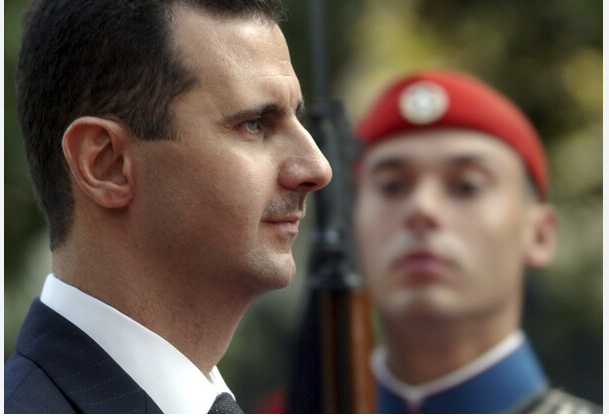Ardain Isma
CSMS Magazine
The Syrian civil war, which erupted in 2011, was rooted in a complex tapestry of political, social, and economic grievances. These factors collectively fueled the widespread desire for a change of government among the Syrian people. So, for this article, I will try to explain the reasons behind the discontent that culminated in the uprising, shedding light on the multifaceted issues that ignited the demand for reform.
Authoritarian Rule
For decades, Syria was ruled under the authoritarian regime of the Assad family. Hafez al-Assad seized power in 1970 through a military coup, establishing a centralized and autocratic system that concentrated authority in his hands. Upon his death in 2000, his son Bashar al-Assad assumed the presidency, continuing the legacy of oppressive governance.
The Assad regime maintained its grip on power through a combination of patronage networks, a pervasive security apparatus, and severe restrictions on political dissent. The state silenced opposition voices, curtailed freedom of speech, and monitored citizens’ activities through an extensive intelligence network. Dissidents faced imprisonment, torture, or enforced disappearance, fostering a climate of fear and repression. This denial of basic freedoms sowed deep-seated resentment among Syrians, particularly among younger generations yearning for democratic governance.
Economic Disparities and Corruption
Economic challenges further exacerbated public discontent. While Syria experienced some economic growth under Bashar al-Assad, much of the wealth was concentrated in the hands of a small elite connected to the regime. The majority of the population faced stagnant wages, high unemployment, and rising costs of living.
In rural areas, prolonged droughts between 2006 and 2011 devastated agriculture, displacing hundreds of thousands of farmers and pushing them into poverty. Many migrated to urban centers, worsening social tensions as they struggled to find jobs and access basic services. Government corruption, cronyism, and a lack of transparency further eroded public trust. Citizens perceived the regime as prioritizing its survival and enrichment over the welfare of the populace, deepening their frustration.
Sectarian Tensions and Marginalization
Although Syria was historically known for its religious and ethnic diversity, the regime’s policies stoked sectarian divisions. The Assad family, belonging to the Alawite minority, relied on Alawite-dominated security forces and military units to maintain control. This created perceptions of favoritism and alienation among Sunni Muslims, who comprised the majority of the population.
The regime’s divide-and-rule tactics also marginalized other groups, including Kurds, who faced systemic discrimination and denial of cultural and linguistic rights. These divisions, coupled with economic and political grievances, heightened societal tensions and contributed to the call for change.
The Spark of the Arab Spring
The Arab Spring uprisings across the Middle East and North Africa in early 2011 served as a catalyst for Syrian protests. Inspired by the overthrow of authoritarian regimes in Tunisia and Egypt, Syrians took to the streets demanding political reform, an end to corruption, and greater freedoms. Initial demonstrations were peaceful, reflecting the public’s hopes for nonviolent change.
However, the regime responded with brutal force, using live ammunition, arrests, and torture to suppress dissent. The violent crackdown escalated tensions and radicalized portions of the opposition, transforming peaceful protests into a full-scale conflict.
Russia and Iran’s geopolitical dilemma
The ousting of President Bashar al-Assad has significantly altered the dynamics of Russian and Iranian involvement in Syria. Both nations have been pivotal supporters of Assad’s regime, providing military assistance and strategic backing throughout the Syrian civil war.
Russia’s Position:
- Strategic Interests: Russia’s military intervention in 2015 was instrumental in bolstering Assad’s government, securing its naval facility in Tartus and an airbase in Latakia. The loss of Assad as an ally jeopardizes these strategic assets and diminishes Russia’s influence in the Middle East. I have always maintained it was a mistake to support an unpopular government rejected by a majority of its constituency. There is another reality for the Russian. Russia’s military is deeply committed to the war in Ukraine, complicating its geopolitical ambitions in Syria.
Iran’s Position:
- Regional Strategy: Iran has long viewed Syria as a critical component of its drive for power projection in the Middle East. Iranian-backed militias have been integral in supporting Assad. But these militias are not Syrians. Without an Assad power base, their efforts to support Assad would be fruitless. I believe it was a strategic blunder to support Assad.
Challenges ahead
The coalition that brought down Assad consists of a broad array of groups with diverse ideologies and objectives. Jerome Drevon, a senior analyst at the International Crisis Group, highlighted that this diversity poses significant challenges for the Syrian opposition in reaching a consensus on a unified governing system. So, the next few days will be key to getting a clue as to how events will unfold.
 Note: Ardain Isma is the Chief-Editor of CSMS Magazine. He is the author of several books, including Midnight at Noon, Bittersweet Memories of Last Spring, and Last Spring was Bittersweet. You can order these books by clicking on the links above.
Note: Ardain Isma is the Chief-Editor of CSMS Magazine. He is the author of several books, including Midnight at Noon, Bittersweet Memories of Last Spring, and Last Spring was Bittersweet. You can order these books by clicking on the links above.


